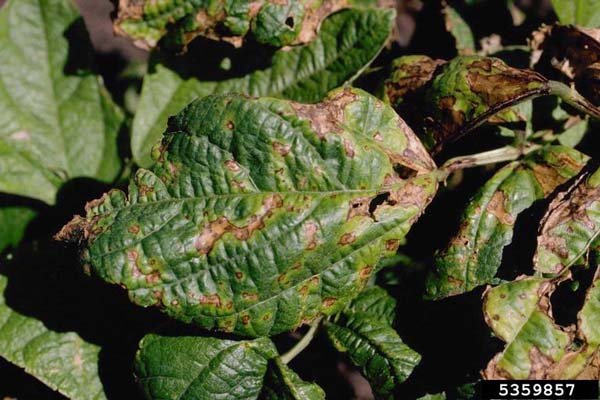Appearance and Life History
Bean leaf bug adults are found in soybean all through a substantial bit of the season making hurt soybean foliage just as making cases. They are around 1/4 inch (6 mm) long and for the most part yellow, tan, or red in shading. The scarab is perceived by an unquestionable dim triangular stamp on its wing covers explicitly behind the thorax (the "neck" locale of the dreadful little creature). Normally two dim spots are accessible on each wing spread and a specific dull band connects around the outside edges. A portion of the time the wing covers have no markings, beside the dim triangle. At whatever point exasperated, the bean leaf bug regularly cover its legs and tumbles to the ground where it may remain unmoving for some time.The bean leaf scarab hatchling is white and especially separated, with a darker head and a dull shaded cemented locale at the back end of its body. To the uncovered eye, it looks moderately indistinct to the corn rootworm hatchling. It supports on soybean nitrogen settling handles and, to a lesser degree, soybean roots.
Damage:
A mind-boggling bean leaf frightening little animal attack may cause authentic leaf and unit hurt. Overwintering adults colonize early creating soybean, empowering on the cotyledons, stems, unifoliate leaves, and rising trifoliolates. Stand disasters are possible in soybean at this period of improvement. Regardless and second period bugs chomp minimal round holes in soybean leaves in the midst of mid and late season. When the creating foliage ends up being less speaking to scarabs, they feed on the green tissue of pods, leaving a thin layer over the seed. In the midst of case improvement, this layer routinely parts leaving a section hole for air borne plant pathogens. These pathogens may cause recolored, buildup secured, shriveled, and moreover wiped out beans.
As noted over, the hatchlings feed on root handles and bolster roots. The proportion of damage that routinely happens has not been appeared to basically diminish yields. Thusly, no specific assessing method has been delivered to choose larval people levels.
Sampling Method
There are 3 basic conditions to survey fields for bean leaf frightening little animal activity:
Early in the season it is basic to choose the proportion of cotyledon, stem, and foliage continuing mischief caused by the overwintering adults. Since plants are minimal at this moment, it's definitely not hard to choose the proximity of bugs and their damage. While investigating, choose the dimension of cotyledon or stem hurt just as the ordinary rate defoliation level for plants in all of 5 domains of the field and note the amount of frightening little animals per plant. Similarly, note whether the creating point is as a result truly hurt or killed on any of the plants. Search for areas where replanting may be basic due to genuinely hurt or dead plants.
Mid and late season defoliation from first and second time creepy crawlies must be assessed to choose if a control application is imperative. Choose the rate defoliation level for particular plants in 5 disengage zones of the field and check the ordinary rate defoliation level for the field in general. Study the scarab masses, and distinctive defoliators, in these equivalent domains to choose their thickness and development. It is basic to approach the testing an area with caution since the scarabs will drop from the foliage to the ground and stow away with even the scarcest piece of plant improvement. Promptly in the day (after the dew has dried from the foliage) and early night analyzing will give an exact photograph of the masses since dreadful little creatures search for cooler domains, for instance, parts in the ground in the midst of the glow of the day.
Late in the season watch whether frightening little animals are supporting on the units. This mischief achieves a white paper thin film which covers the seed. Just once in a while does supporting damage extend into the seed. Make an effort not to confuse this with grasshopper hurt which generally connects through the unit to the seeds. Self-assertively select 2 plants in all of 5 locales of the field and count the amount of units per plant and the number that indicate bug hurt (10 signify plants). Figure the dimension of hurt units per plant for the field when all is said in done. Note if the cases are green, begin to turn yellow, or are yellow/dim hued. In like manner choose the amount of frightening little animals per clear using a bug clear net. Take 5 sets of 20 clears in the field. Choose the amount of bean leaf bugs per clear. Additionally, note whether bugs are still right now supporting while in the meantime investigating the field.

Thanks for enlighten us to the possibility and treatment of beans disease we have learnt greatly from this post and would apply it to our agriculture practices.
Resteem